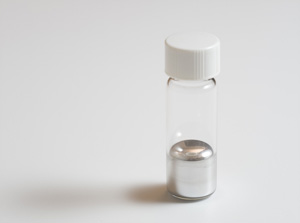Mercury Speciation (Hg)
 The difference in toxicity, mobility, and treatability of mercury is directly predicated on its molecular form. Many regulations associated with food, water, and drug safety focus on methyl mercury using promulgated method EPA 1630. Although EPA Method 1630 has been proven to have excellent performance for a vast array of sample matrices it is limited to providing quantitative results for monomethyl mercury and monoethyl mercury. In order to support more diverse chemical systems and complicated mercury species Brooks Applied Labs has developed state of the art analytical methods coupling liquid chromatographic systems with in-line cold vapor reduction and inductively coupled plasma mass spectrometry.
The difference in toxicity, mobility, and treatability of mercury is directly predicated on its molecular form. Many regulations associated with food, water, and drug safety focus on methyl mercury using promulgated method EPA 1630. Although EPA Method 1630 has been proven to have excellent performance for a vast array of sample matrices it is limited to providing quantitative results for monomethyl mercury and monoethyl mercury. In order to support more diverse chemical systems and complicated mercury species Brooks Applied Labs has developed state of the art analytical methods coupling liquid chromatographic systems with in-line cold vapor reduction and inductively coupled plasma mass spectrometry.
Mercury Speciation Services Available:
Methylmercury
Ethylmercury
Inorganic Mercury
Total Volatile Mercury
Acid-Labile Mercury
Pore Water Extractions
Elutriate Generation
Mercury Species Analyzed by EPA Method 1630
- Monomethyl Mercury [MMHg]
- Monoethyl Mercury [EtHg]
Selected Mercury Species Supported by Hyphenated ICP-MS Techniques
- Monomethyl Mercury [MMHg]
- Monoethyl Mercury [EtHg]
- Inorganic Mercury [Hg(II)]
Mercury Species Associated with
- Humic Acids
- Fulvic Acids
- Proteins
Matrices Supported
- Water (wastewater, surface water, well water, seawater, impacted water, industrial process water, mine runoff)
- Soil
- Sediment
- Coal Combustion Byproducts (e.g. fly ash)
- Tissue (nearly all)
- Food (nearly all vegetable, meat, and grains)
- Nearly all aquatic organisms
- Nearly all terrestrial organisms
- Nutraceuticals
- Supplements
- Textiles
- Solvents
- Chemicals (acids, bases, etc.)
- Air
- Petroleum and Petroleum Products
At Brooks Applied Labs, we have both the innovation and the expertise to provide you with ultra-low mercury and mercury speciation analyses for virtually any matrix type. Please contact us to find out which mercury test is the appropriate method choice for your samples.
